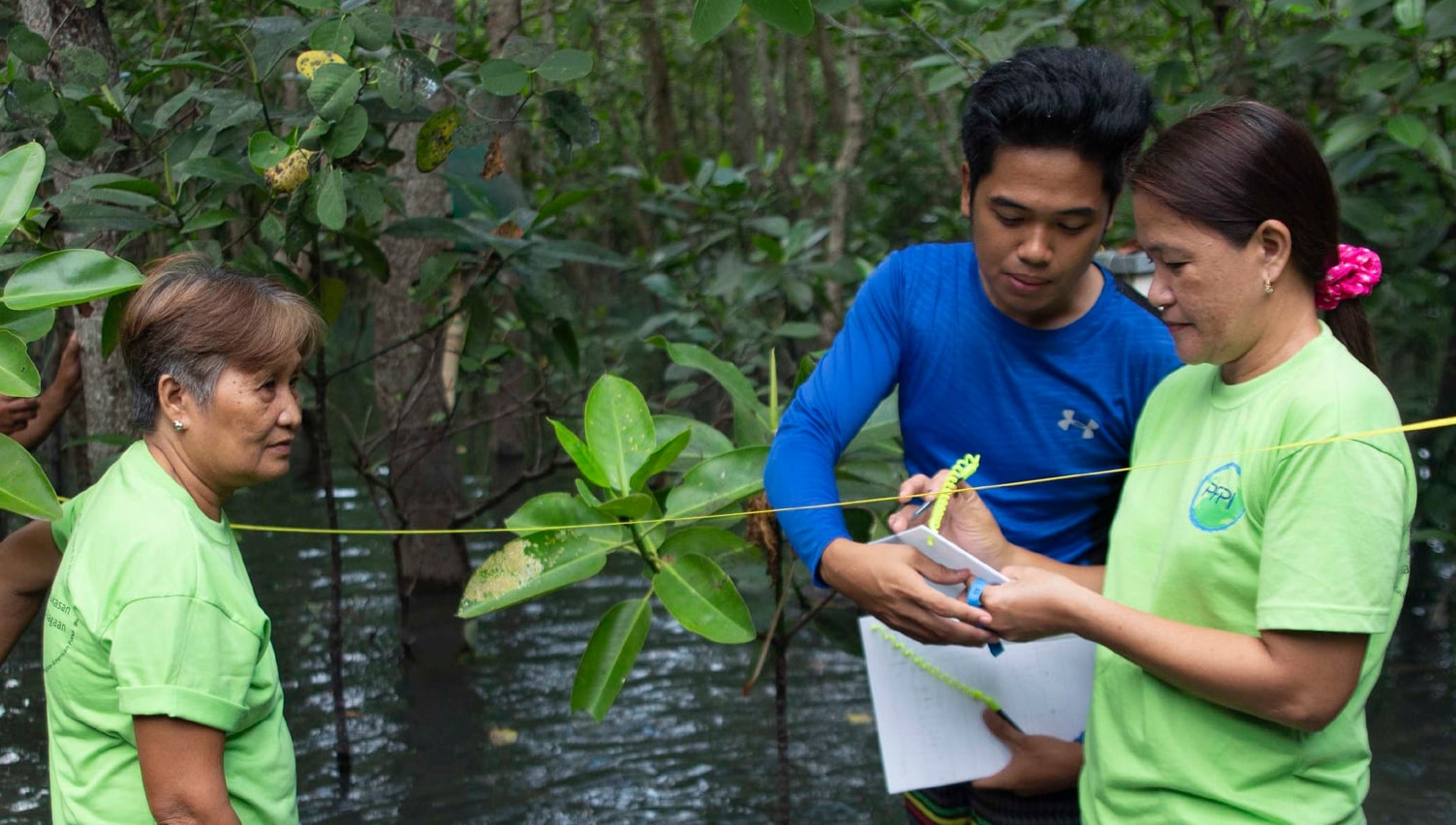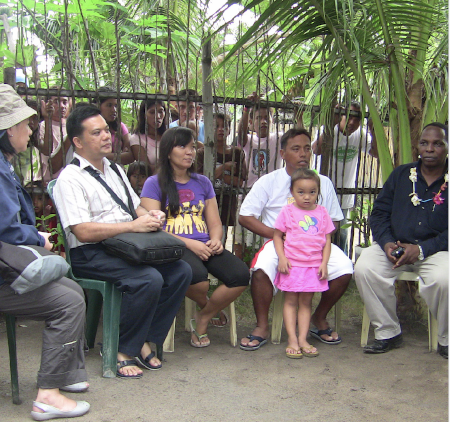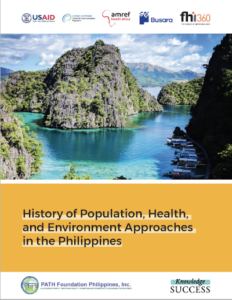
Population, Health, and Environment in the Philippines: A Rich History
New publication documents decades of work
October 7, 2021
By: Joan CastroSarah V. HarlanElizabeth Tully
This post was originally published on the Knowledge SUCCESS website. To view the original post, click here.
The Philippines has been a pioneer of programming using the multisectoral Population, Health, and Environment (PHE) approach. The country has much to share with others interested in using the PHE approach to improve conservation efforts, family planning, and overall health in their communities. For the first time, insights from two decades of PHE programming have been collected in one document—The History of Population, Health, and Environment Approaches in the Philippines. Intended for use by others interested in multi-sectoral approaches, this document provides both a history of PHE programs in the country and a compendium of themes and programmatic lessons learned.
Population, Health, and Environment (PHE) is an integrated community-based approach that recognizes and addresses the complex relationships between people’s health and the environment. This multi-sectoral approach strives to improve voluntary family planning and reproductive health, conservation, and natural resource management within the communities living in ecologically rich areas of our globe.
In 2000, the Integrated Population and Coastal Resource Management (IPOPCORM) initiative was launched in the Philippines. A trailblazing Population, Health, and Environment (PHE) program, IPOPCORM provided evidence that multi-sectoral approaches actually worked—and could promote community health and environmental conservation more effectively than standalone programs. When IPOPCORM was launched, there was a limited amount of information about PHE—looking for “PHE” on any search engine was fruitless. Now, knowledge about the approach is widely available—and programs in the Philippines have contributed to the rich evidence and tools available. But insights, recommendations, and programmatic guidance are still spread across multiple resources and project reports. Some lessons learned were never even documented explicitly and remained “in the heads” of PHE experts.
Summarizing the Philippines’ rich history of PHE work
To address this, Knowledge SUCCESS partnered with PATH Foundation Philippines to curate and compile evidence and experiences from decades of PHE programs in the Philippines. Together we synthesized dozens of documents and conducted in-depth interviews with experts and implementers who have worked on groundbreaking PHE programs in the Philippines. The result is a 75-page booklet that combines a history of PHE in the Philippines with a roundup of themes and programmatic guidance.
Until now, the information in this booklet has been scattered among various project reports, journal articles, and meeting notes—and in some cases, not documented at all. This resource reviews the rich history of PHE in the Philippines, highlighting key projects and milestones. It then summarizes implementation guidance, lessons learned, and key themes that have emerged during the last two decades, and provides links to resources and tools with more details. The booklet also includes quotes from experts, strategies for engaging communities, and success stories on various PHE themes and programs.
Cover image: History of Population, Health, and Environment Approaches in the Philippines
What does the new publication cover?
The History of Population, Health, and Environment Approaches in the Philippines describes the benefits of the PHE approach—with a particular emphasis on vulnerable and marginalized communities. It talks about the value of partnerships—among advocates, health workers, policymakers, and community members—and shows the impact of multiple sectors coming together for common goals of reducing environmental degradation and improving reproductive health.
The booklet provides guidance and lessons learned for those implementing PHE programs in other settings, including information on the following topics:

A community gathering. Image credit: PATH Foundation Philippines, Inc.
- Communicating about PHE’s impact
- Establishing long-term commitment from PHE champions and communities
- Working with faith-based groups
- Framing PHE within the larger context
- Ensuring local ownership for sustainability
- Scaling up PHE
- Meeting the needs of underserved groups (including youth)
- Addressing gender
- Integrating programs
How can you use these PHE lessons for your own work?
This is a practical resource for others interested in PHE implementation, including program managers, technical advisors, or policymakers in the Philippines and worldwide. In today’s increasingly interconnected world, it is especially important to explore multi-sectoral approaches to meet the holistic needs of families and communities. We look forward to seeing how others incorporate these learnings into their own programs to advance the health and well-being of communities around the world.
The publication can be accessed on People-Planet Connection, a new site dedicated to collecting PHE information and resources in one central location.
Interested in Knowledge SUCCESS’ other PHE work?
View our 20 Essential Resources for Population, Health, and Environment collection | Not sure where to start? Take a quiz to see what PHE resources suit your needs





